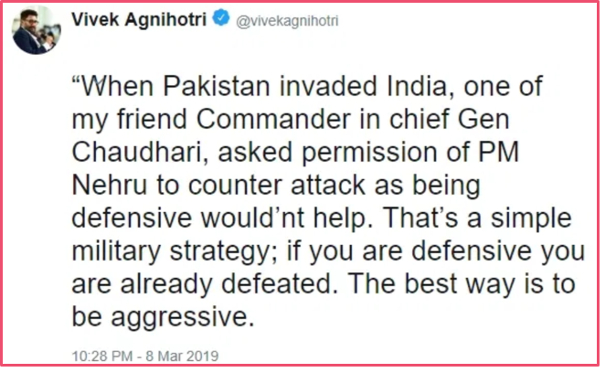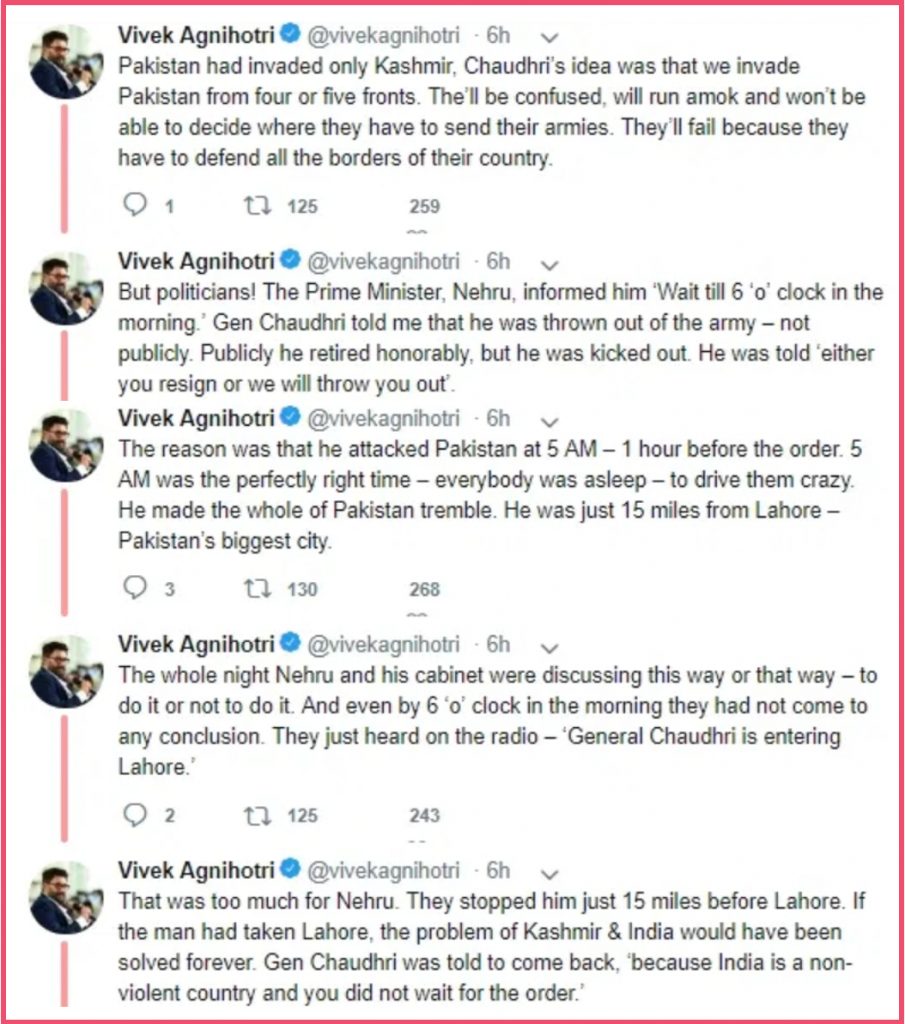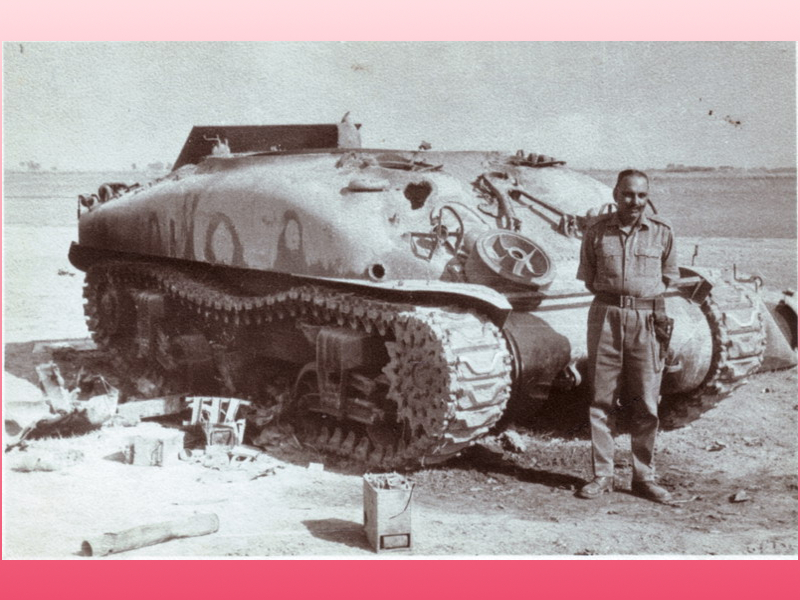Based on an article by Arjun Sidharth, originally published by Alt News, 11 March 2019
Vivek Agnihotri has the dubious distinction of having to delete several of his tweets because they either reveal some of the unsavoury opinions he holds or are factually incorrect. This fact-check reviews a tweet of his, also deleted, that illustrates how tenuous his grasp over history is.
In 2019, Agnihotri posted a thread of tweets beginning with this one –

The reference to Gen Chaudhari helps identify which “invasion” Agnihotri is referring to. General Jayanto Nath Chaudhuri was Chief of the Army Staff for the period 20 Nov 1962 – 07 Jun 1966. It is therefore indisputable that Agnihotri, or someone else he borrowed this narrative from, is alluding to the Indo-Pak War of 1965.
The rest of Agnihotri’s story claimed that Gen Chaudhuri presented a bold plan that involved invading Pakistan on several fronts, and was asked by the Prime Minister, Jawaharlal Nehru, to wait until 6AM in the morning to begin the counter-offensive. Apparently, Nehru and his cabinet discussed the general’s proposal all night and were unable to decide on acting by the morning. Meanwhile, Gen Chaudhuri, according to Agnihotri’s research, pre-emptively began military operations at 5AM and was able to get to within 15 miles of Lahore, because the Pakistanis were asleep. Nehru ordered him instead to return because “India is a non-violent country and [Gen Chaudhuri] did not wait for the order.” The narrative then claims that Gen Chaudhuri was “thrown out of the army… the reason was that he attacked Pakistan… 1 hour before the order.”

The story is internally inconsistent in itself – on the one hand it claims that the Union cabinet had not reached any conclusion even at 6AM, but on the other it asserts that Gen Chaudhuri attacked one hour before he received the order to do so. The cabinet ordered Gen Chaudhuri to attack, but when it discovered that he had commenced operations and was close to Lahore, he was apparently told to return because India is a non-violent country.
Agnihotri also does not bother to explain why, despite the Prime Minister and the cabinet’s displeasure, Gen Chaudhuri was awarded a Padma Vibhushan in November 1965, permitted to take over as Chairman of the Chiefs of Staff Committees in March 1966, retired (not resigned) in June 1966 and was appointed High Commissioner of India in Canada, serving for three years.
However the glaringly false claim Agnihotri makes is that of Nehru being the Prime Minister during the 1965 Indo-Pak War. Nehru had passed away on 27 May 1964. Lal Bahadur Shastri became Prime Minister thirteen days later and remained so through the period of the initial Indo-Pak skirmishes between January-June 1965 in the Rann of Kutch, the Pakistani infiltration into Kashmir in August 1965 code-named Operation Gibralter, the subsequent full-scale war and its conclusion.
If being caught peddling lies was not reason enough for Agnihotri to delete the tweets, it turns out that this story was not even a product of his own research. To be fair, he used quote-marks to indicate that he was borrowing it. The source is possibly a work called “From Darkness to Light“, a collection of talks by the controversial godman “Osho” Rajneesh. On page 385 and chapter 28, Rajneesh narrates this fabrication.
Agnihotri claims to have written and directed the film “The Tashkent Files” – a work of fiction described as the film for this post-truth fake news era. The tweets were posted in March 2019 and the film released the next month. A central subject of the film is Shastri, and any “research” – however flimsy – he might have conducted for the script would have informed him who the Prime Minister was during the period. It appears that Agnihotri does not allow the truth to come in the way of telling or filming fairy tales that fit his opinions.
Disclaimer: This article has not been edited by AlignIndia Editors.
The opinions expressed within this article are the personal opinions of the author. AlignIndia does not take any responsibility for the content of the article.


